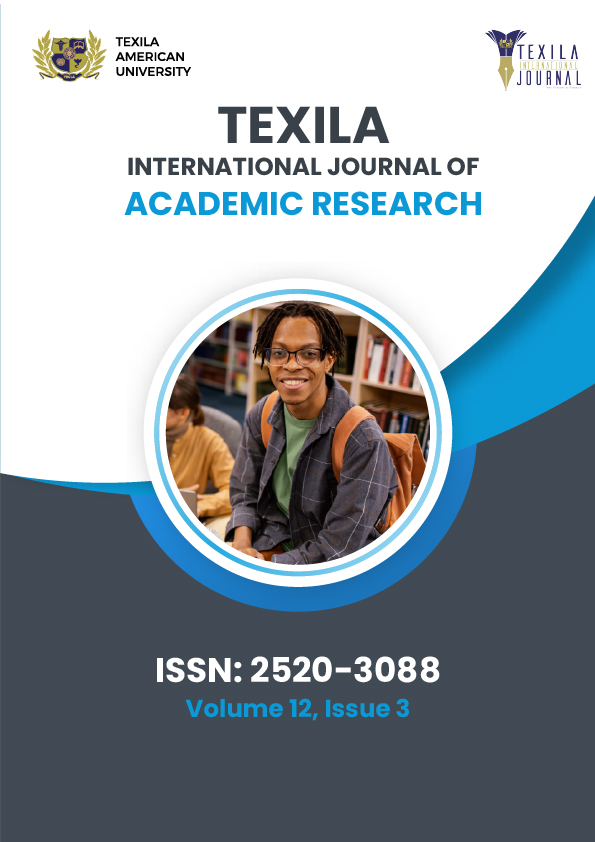References:
[1]. Demuyakor, J., Nyatuame, I. N., and Obiri, S., 2021, Unmasking COVID-19 Vaccine ‘ Infodemic ’ in the Social Media, vol. 11, no. 4, pp. 1–9, 2021.
[2]. Dzinamarira, T., Nachipo, B., Phiri, B., and Musuka, G., 2021, COVID-19 Vaccine Roll-Out in South Africa and Zimbabwe : Urgent Need to Address Community Preparedness , Fears and Hesitancy, 2021.
[3]. Gebru, A. A., et al., 2021, Global burden of COVID-19: Situational analyis and review, Hum. Antibodies, vol. 29, no. 2, pp. 139–148, 2021, doi: 10.3233/HAB-200420.
[4]. Lamptey, E., and Senkyire, E. K., 2022, CLINICAL EXPERIMENTAL VACCINE Exploring the myths surrounding the COVID-19 vaccines in Africa : the study to investigate their impacts on acceptance using online survey and social media, no. December 2020, pp. 193–208, 2022.
[5]. Fazel, M., et al., 2021, ClinicalMedicine Willingness of children and adolescents to have a COVID-19 vaccination : Results of a large whole schools survey in England, vol. 40, pp. 1–9, 2021, doi: 10.1016/j.eclinm.2021.101144.
[6]. Cai, H., et al., 2021, Attitudes Toward COVID-19 Vaccines in Chinese Adolescents, vol. 8, no. July, pp. 1–6, 2021, doi: 10.3389/fmed.2021.691079.
[7]. Agyekum, M. W., Afrifa-Anane, G. F., Kyei-Arthur, F., and Addo, B., 2021, Acceptability of COVID-19 Vaccination among Health Care Workers in Ghana, Adv. Public Heal., vol. 2021, 2021, doi: 10.1155/2021/9998176.
[8]. Alhassan, R. K., Agyei, S. O., Ansah, E. K., and Gyapong, M., 2021, COVID ‑ 19 vaccine uptake among health care workers in Ghana : a case for targeted vaccine deployment campaigns in the global south, Hum. Resour. Health, pp. 1–12, 2021, doi: 10.1186/s12960-021-00657-1.
[9]. Ofori-Adjei, D., Lartey, M., and Koram, K. A., 2020, Ghana and the COVID-19 pandemic,Ghana Med. J., vol. 54, no. 4, pp. 1–2, 2020, doi: 10.4314/GMJ.V54I4S.1.
[10]. Afriyie, D. K., Asare, G. A., Amponsah, S. K., and Godman, B., 2020, COVID-19 pandemic in resource-poor countries : challenges , experiences and opportunities in Ghana, pp. 3–8, 2020, doi: 10.3855/jidc.12909.
[11]. Di Giuseppe, G., Pelullo, C. P., Volgare, A. S., Napolitano, F., and Pavia, M., 2022, Parents ’ Willingness to Vaccinate Their Children With COVID-19 Vaccine : Results of a Survey in Italy, J. Adolesc. Heal., vol. 70, no. 4, pp. 550–558, 2022, doi: 10.1016/j.jadohealth.2022.01.003.
[12]. Sam N. A., 2022, Children and adolescents in African countries should also be vaccinated for COVID- 19, pp. 1–6, 2022, doi: 10.1136/bmjgh-2021-008315.
[13]. Bole District Health Directorate, 2022, Annual District Health Performance Review, Bole, 2022.
[14]. Shapiro, G. K., Holding, A., Perez, S., Amsel, R., and Rosberger, Z., 2016, Author ’ s Accepted Manuscript Validation of the Vaccine Conspiracy Beliefs Scale Papillomavirus Res., 2016, doi: 10.1016/j.pvr.2016.09.001.
[15]. Bierwiaczonek, K., Kunst, J. R., and Pich, O., 2020, Belief in COVID-19 Conspiracy Theories Reduces Social Distancing over Time, 2020, doi: 10.1111/aphw.12223.
[16]. Douglas, K. M., 2021, COVID-19 conspiracy theories, 2021, doi: 10.1177/1368430220982068.
[17]. Jager, K. J., Van Dijk, P. C., Zoccali, C., and Dekker, F. W., 2008, The analysis of survival data: The Kaplan-Meier method, Kidney Int., vol. 74, no. 5, pp. 560–565, 2008, doi: 10.1038/ki.2008.217.
[18]. Abbas, Q., Mangrio, F., and Kumar, S., 2021, Myths, beliefs, and conspiracies about COVID-19 vaccines in Sindh, Pakistan: An online cross-sectional survey, Authorea, pp. 1–7, 2021, doi: 10.22541/au.161519250.03425961/v1.
[19]. Akram, H., Yingxiu, Y., Al-Adwan, A. S., and Alkhalifah, A., 2021, Technology Integration in Higher Education During COVID-19: An Assessment of Online Teaching Competencies Through Technological Pedagogical Content Knowledge Model, Front. Psychol., vol. 12, no. August, pp. 1–11, 2021, doi: 10.3389/fpsyg.2021.736522.
[20]. Burki, T., 2023, WHO ends the COVID-19 public health emergency, Lancet. Respir. Med., vol. 11, no. 7, p. 588, 2023, doi: 10.1016/S2213-2600(23)00217-5.
[21]. Rosenstock, I. M., and 2015, Historical Origins of the Health Belief Model, vol. 2, no. 4, 2015.
[22]. Green, E. C., Murphy, E. M., and Gryboski, K., 2022, The Health Belief Model, Wiley Encycl. Heal. Psychol., no. May 2022, pp. 211–214, 2020, doi: 10.1002/9781119057840.ch68.
[23]. BOLE DISTRICT ASSEMBLY, 2O21, BOLE DISTRICT ASSEMBLY 2O20 ANNUAL PROGRESS REPORT, 2021.
[24]. Bole district, 2010, [Online]. Available: www.ghanastatisticalservice.com
[25]. District Health Directorate, 2023, “No Title,” in Annual District Health Performance Review, 2023.
[26]. Acheampong, T., Akorsikumah, E. A., Osae-Kwapong, J., Khalid, M., Appiah, A., and Amuasi, J. H., 2021, Examining vaccine hesitancy in sub-saharan africa: A survey of the knowledge and attitudes among adults to receive covid-19 vaccines in ghana, Vaccines, vol. 9, no. 8, 2021, doi: 10.3390/vaccines9080814.
[27]. Efendi D., et al., 2022, The Role of Knowledge, Attitude, Confidence, and Sociodemographic Factors in COVID-19 Vaccination Adherence among Adolescents in Indonesia: A Nationwide Survey, Vaccines, vol. 10, no. 9, pp. 1–15, 2022, doi: 10.3390/vaccines10091489.
[28]. Lv, M., et al., 2021, Safety, immunogenicity, and efficacy of COVID-19 vaccines in children and adolescents: A systematic review, Vaccines, vol. 9, no. 10, pp. 1–13, 2021, doi: 10.3390/vaccines9101102.
[29]. Rehati, P., et al., 2022. COVID‐19 Vaccine Hesitancy among Adolescents: Cross‐Sectional School Survey in Four Chinese Cities Prior to Vaccine Availability, Vaccines, vol. 10, no. 3, pp. 1–13, 2022, doi: 10.3390/vaccines10030452.
[30]. Wang, D., et al., 2022, Levels and determinants of COVID-19 vaccine hesitancy among sub-Saharan African adolescents, medRxiv, p. 2022.05.18.22275274, 2022, [Online]. Available: https://doi.org/10.1101/2022.05.18.22275274%0Ahttp://medrxiv.org/content/early/2022/05/21/2022.05.18.22275274.abstract%0Ahttps://www.medrxiv.org/%0Ahttp://ovidsp.ovid.com/ovidweb.cgi?T=JS&PAGE=reference&D=empp&NEWS=N&AN=2018694525
[31]. Adjaottor, E. S., Addo, F. M., Ahorsu, F. A., Chen, H. P., and Ahorsu, D. K., 2022, Predictors of COVID-19 Stress and COVID-19 Vaccination Acceptance among Adolescents in Ghana,Int. J. Environ. Res. Public Health, vol. 19, no. 13, 2022, doi: 10.3390/ijerph19137871.
[32]. Kabakama, S., et al., 2022, Commentary on COVID-19 Vaccine Hesitancy in sub-Saharan Africa, Trop. Med. Infect. Dis., vol. 7, no. 7, pp. 1–4, 2022, doi: 10.3390/tropicalmed7070130.
[33]. Fan, C. W., et al., 2021, Extended theory of planned behavior in explaining the intention to COVID-19 vaccination uptake among mainland Chinese university students: an online survey study, Hum. Vaccines Immunother., vol. 17, no. 10, pp. 3413–3420, 2021, doi: 10.1080/21645515.2021.1933687.
[34]. Uscinski, J. E., et al., 2020, Why do people believe COVID-19 conspiracy theories ? Research questions, Harvard Kennedy Sch. Misinformation Rev., vol. 1, no. 3, pp. 1–12, 2020.
[35]. van Prooijen, J. W., and Douglas, K. M., 2018, Belief in conspiracy theories: Basic principles of an emerging research domain, Eur. J. Soc. Psychol., vol. 48, no. 7, pp. 897–908, 2018, doi: 10.1002/ejsp.2530.
[36]. Wolff, K., 2021, COVID-19 Vaccination Intentions: The Theory of Planned Behavior, Optimistic Bias, and Anticipated Regret, Front. Psychol., vol. 12, no. June, 2021, doi: 10.3389/fpsyg.2021.648289.
[37]. Greenhawt, M., et al., 2021, The Risk of Allergic Reaction to SARS-CoV-2 Vaccines and Recommended Evaluation and Management: A Systematic Review, Meta-Analysis, GRADE Assessment, and International Consensus Approach, J. Allergy Clin. Immunol. Pract., vol. 9, no. 10, pp. 3546–3567, 2021, doi: 10.1016/j.jaip.2021.06.006.
[38]. Adane, M., Ademas, A., and Kloos, H., 2022, Knowledge, attitudes, and perceptions of COVID-19 vaccine and refusal to receive COVID-19 vaccine among healthcare workers in northeastern Ethiopia. BMC Public Health, vol. 22, no. 1, pp. 1–14, 2022, doi: 10.1186/s12889-021-12362-8.
[39]. Bagateli, L. E., Saeki, E. Y., Fadda, M., Agostoni, C., Marchisio, P., and Milani, G. P., 2021, Covid-19 vaccine hesitancy among parents of children and adolescents living in brazil, Vaccines, vol. 9, no. 10, pp. 1–9, 2021, doi: 10.3390/vaccines9101115.


